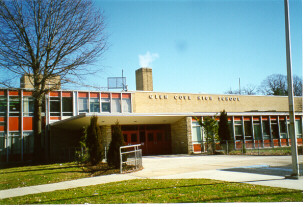Glen Cove Board of Education officials reported on Nov. 26 that state tests continue to show the district underperforming in some academic areas but showing strong gains in performance.
The district has seen “maximum growth,” said Alexa Doeschner, assistant superintendent for curriculum, instruction and technology.
The district’s performance index statewide is near the state average, with certain areas underperforming, Doeschner said.
Doeschner said the district scored in the top two growth levels in all categories for fourth—through eighth-grade students.
State test scores showed that the sixth—and seventh-grade students scored below the state average and underperformed in eight of the 12 state regents exams.
Doeschner said the district was not at risk of becoming a state “Target District” this year, as it has been in the past.
“We are beyond proud to share with you the incredible growth that our students have shown in [2023-2024] compared to [2022-2023],” Doeschner said.
“Each year that I have been in my current role, I have had to write a letter to the state making an appeal not to be placed on a target list,” Doeshner said.
She said each year, the state has accepted her appeal.
“This year, I do not have to write a letter of appeal,” she said.
“Every single year, New York State sends us a state growth report,” Doeschner said.
“And we look at this report because New York State recognizes that if we only use one test score to measure student learning, we’re not doing right by students,” she said.
Doeschner said the state examines multiple factors in its assessment.
“As educators, we know better than anyone that test scores are not going to paint the full picture,” Doeschner said.
The state groups students with similar academic backgrounds and characteristics, she said.
Doeschner said the state considers whether students are economically disadvantaged and have a learning disability, among other factors. Even if students score similarly, the state compares them in different groups.
All scores are compared to the previous academic year.
“What New York State wants to capture for student growth scores is how each student is able to grow in a year in comparison to similar students,” Doeschner said.
The state calculated a growth index based on these factors, Doeschner said.
This year, the district received a four, the highest possible growth level, for students districtwide and in math scores.
The district received a three, the second highest growth level, in English language Arts, English language Learners and Students with Disabilities.
The growth level was determined by the state, and is based on state assessments in the fourth through eighth grade.
Last year, the district scored a 1, the lowest growth index, in all categories.
Doeschner said this year’s growth is due to implementing instructional change.
State statistics show that four elementary and middle school grade levels scored on or above the state average, and two scored below.
According to a breakdown in the New York Times, the fourth grade scored 10 points above the statewide performance index, and the seventh grade scored 7 points below.
At the high school level, eight of the 12 regents exams scored below the state average.
The lowest-performing regents exam was chemistry, which scored 17 points below the average.
According to the score breakdown, four regents exams performed higher than the average.
The highest-performing regents exam was mathematics, which scored 18 points above the state average.
In a recent U.S. News & World Report ranking of the best New York middle schools, Robert M Finley Middle School ranked at No. 378.
Neighboring North Shore Middle School is ranked No.37, which is the sixth-best middle school in Nassau County.
Locust Valley Middle School ranked at No. 83 and Oyster Bay Middle School ranked at No. 777.
U.S. News & World Report placed Glen Cove High School at No. 439 in a ranking of the best New York high schools.
North Shore High School ranked at No. 57, Locust Valley High School ranked at No. 101 and Oyster Bay High School ranked at No. 136.
Glen Cove High School introduces the following six courses to its curriculum next year: Advanced Placement Computer Science A, Horticulture and Hydroponics, Beyond Boarder: Exploring Hispanic Literature, Scripted Journeys: Playwriting Essentials, Guitar Performance and Technique and Podcast Cove.
AP Computer Science A will be a new offering in the math department and a full-year course. Advanced placement courses are college-level classes.
“Students will cultivate their understanding of coding through analyzing, writing and testing code,” Doeschner said.
Horticulture and hydroponics will be part of the science department and will be a semester-long course at the high school level.
“It is recommended by a teacher in the science department,” Doeschner said. “And it is a course that is meant to teach schools about sustainable food production.”
Doeschner said the course will involve hands-on learning.
The English department will have two new courses: a Hispanic literature course and a playwriting course. Both are semester-long courses.
Doeschner said the new semester-long Hispanic literature course will provide students with “diverse voices ” and cover multiple genres.
The playwriting classes will learn about story development, and students will workshop, edit and format their own projects.
The guitar and podcast courses are under the Fine & Performing Arts Department.
The guitar performance is a full-year course on the music track. Doeschner said there is currently one music elective, and the new course will offer another option.
The half-year podcast course is an elective in the television production track.
Doeschner said that both arts courses are proposed for dual enrollment with Five Towns College.
Doeschner said the district’s growth is a “testament to the hard work of our students, our teachers, our staff, and our administrators.”
She said student participation has increased in recent years. Doeschner said that student participation in state testing helps form a more accurate representation of student growth.
District growth is due to instructional changes and implementation, Doeschner said.
“This would not be possible if we were not working together in the service of our students,” she said.




























